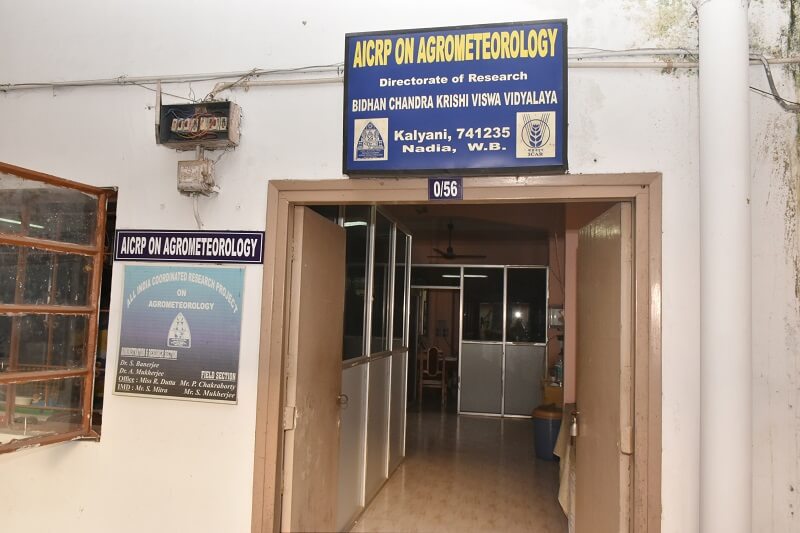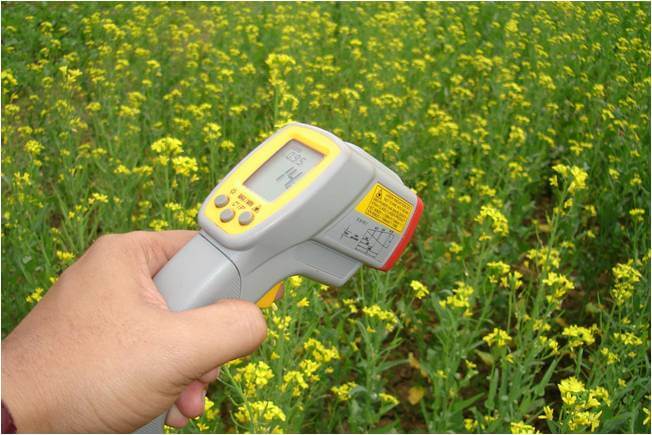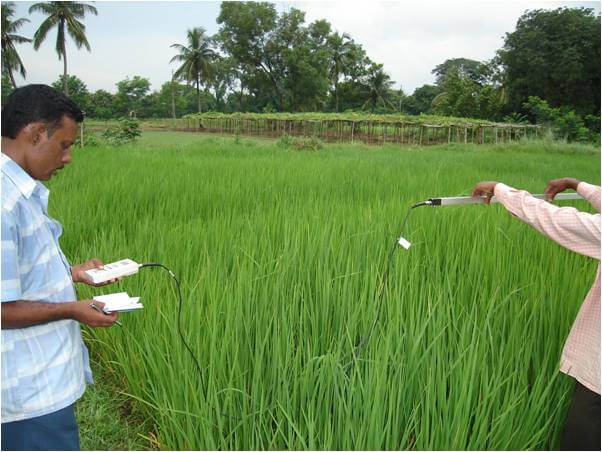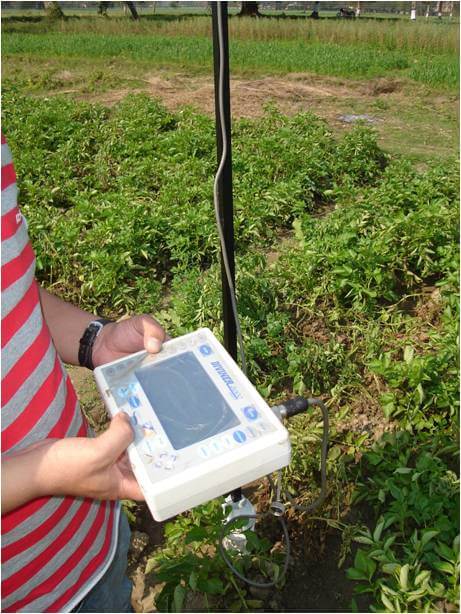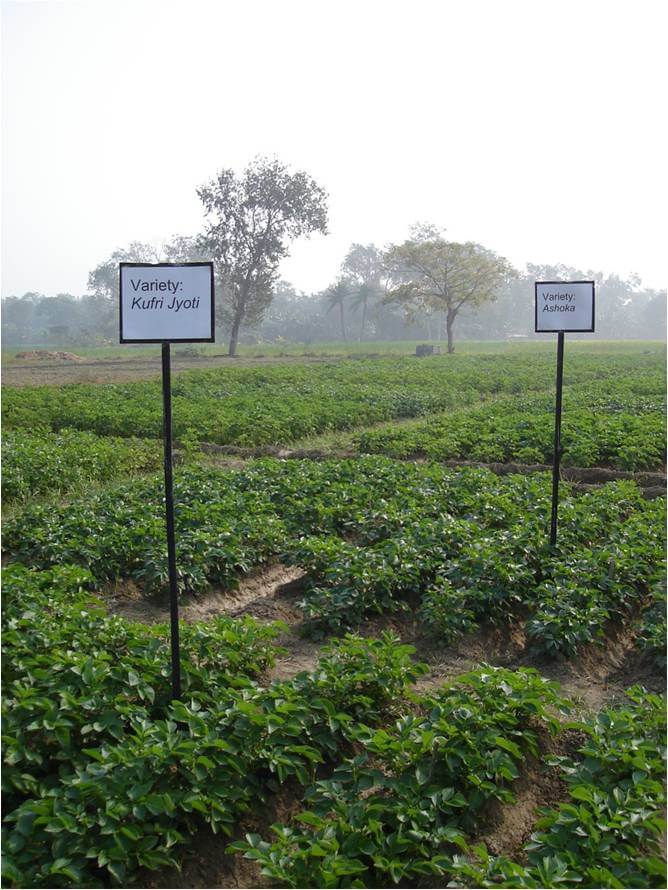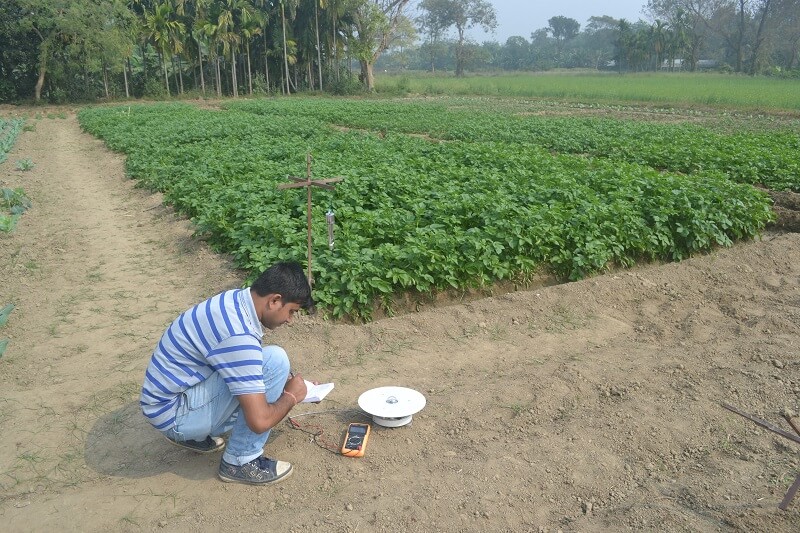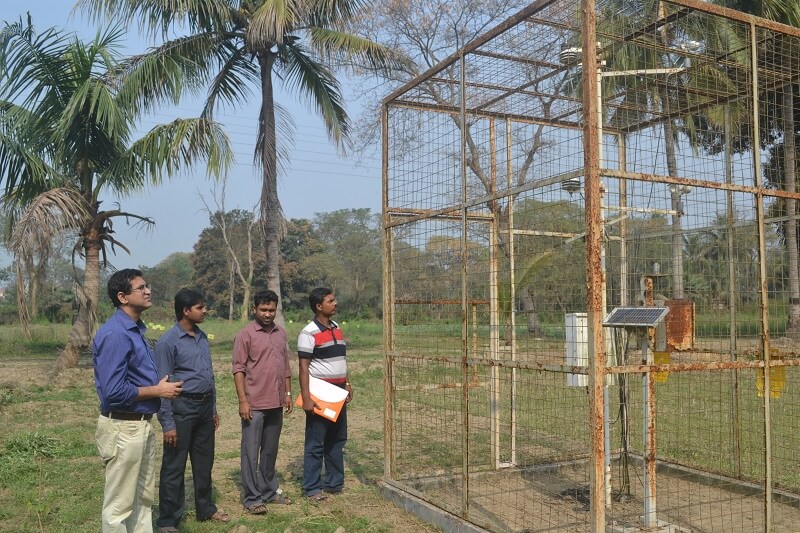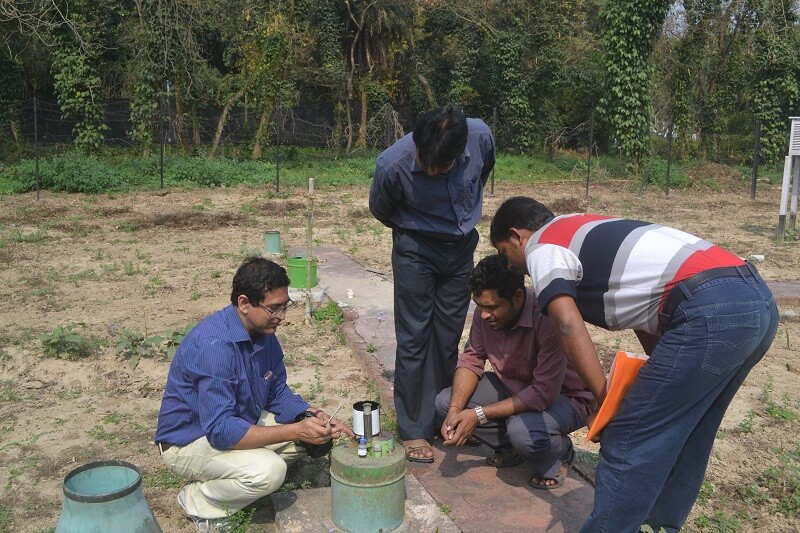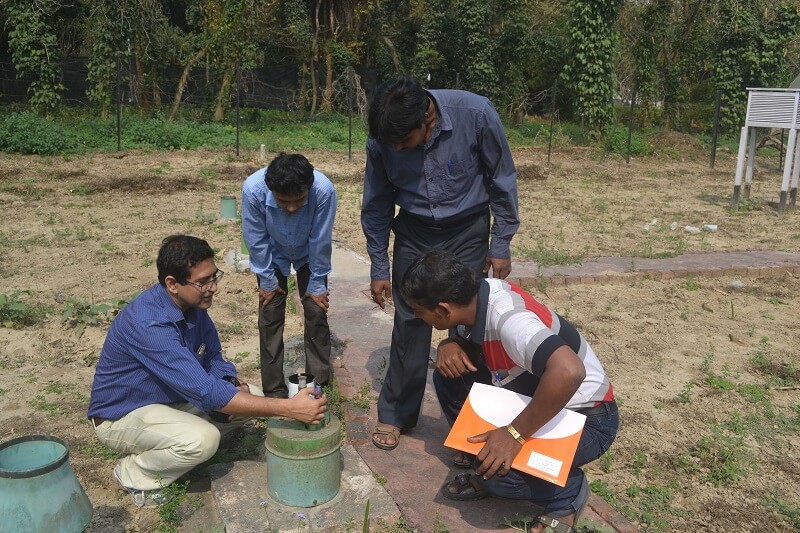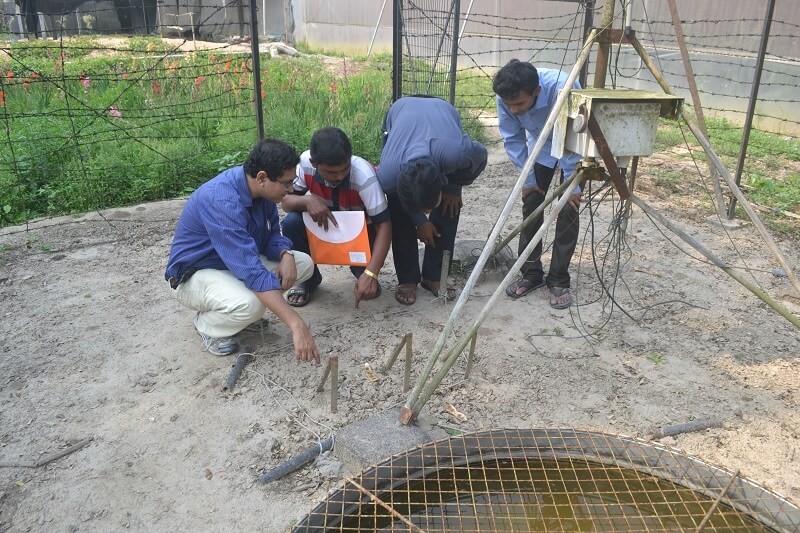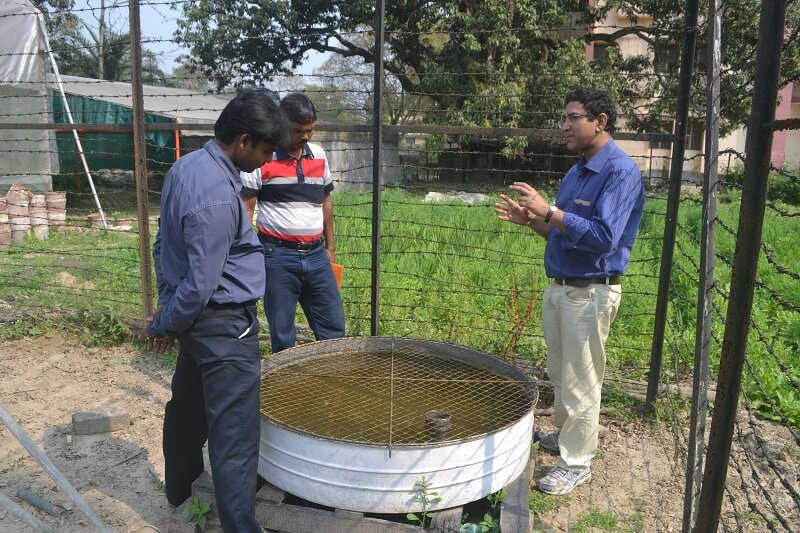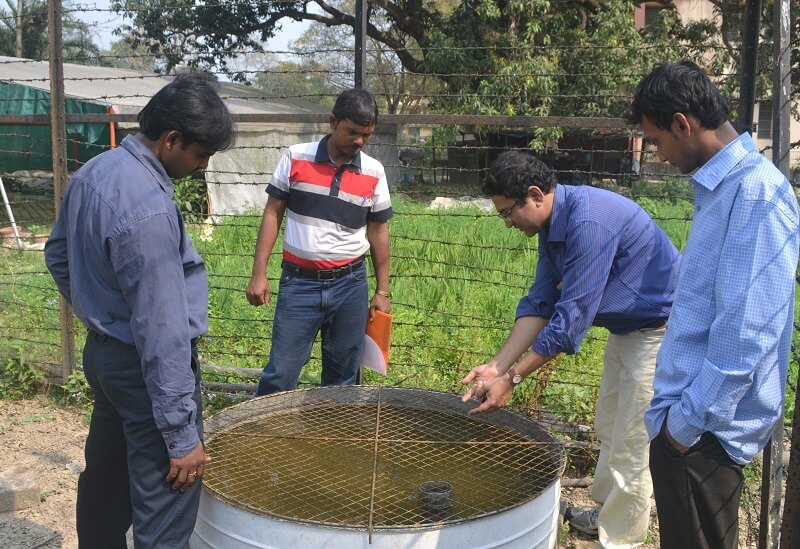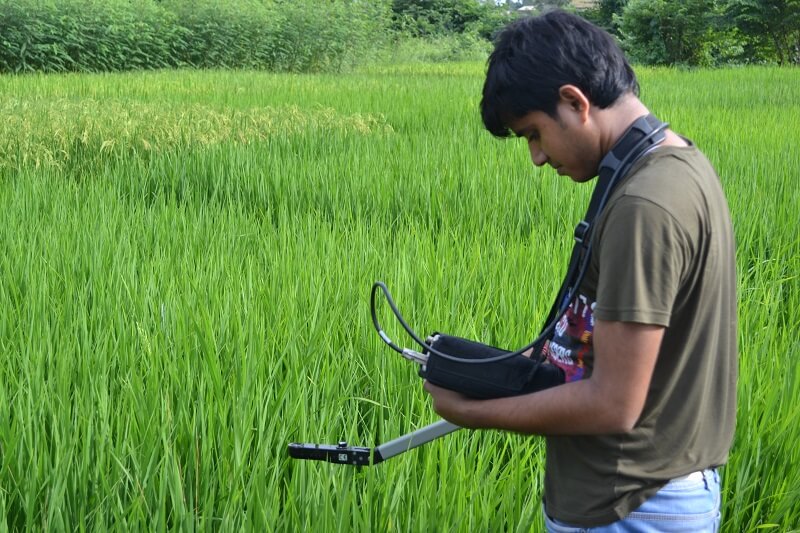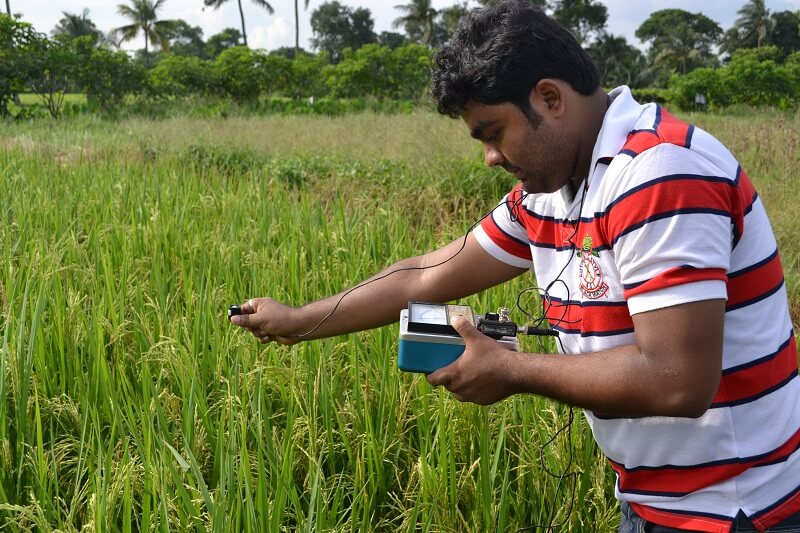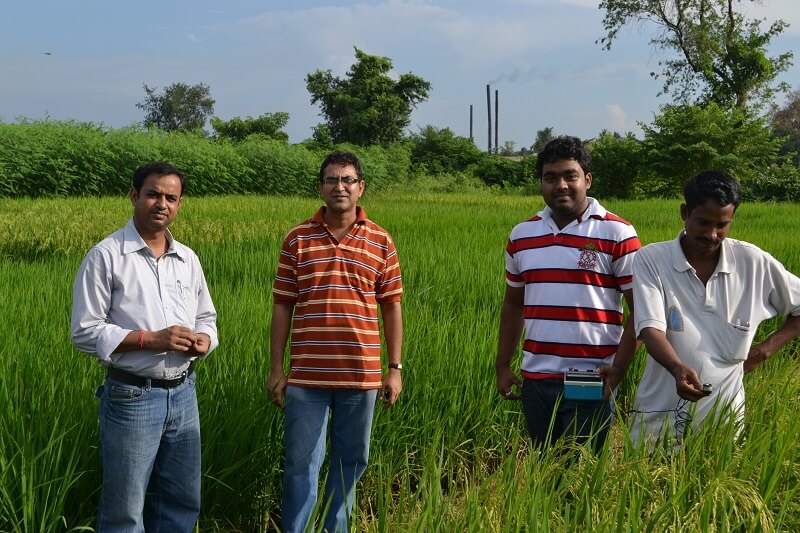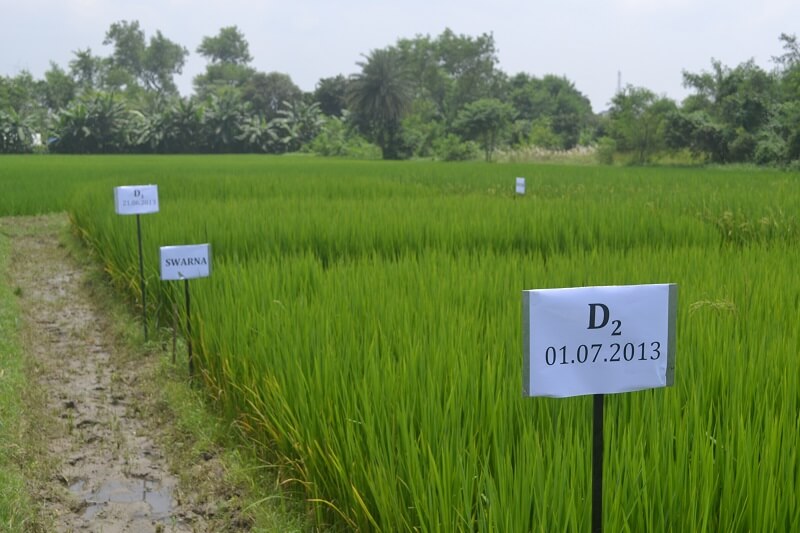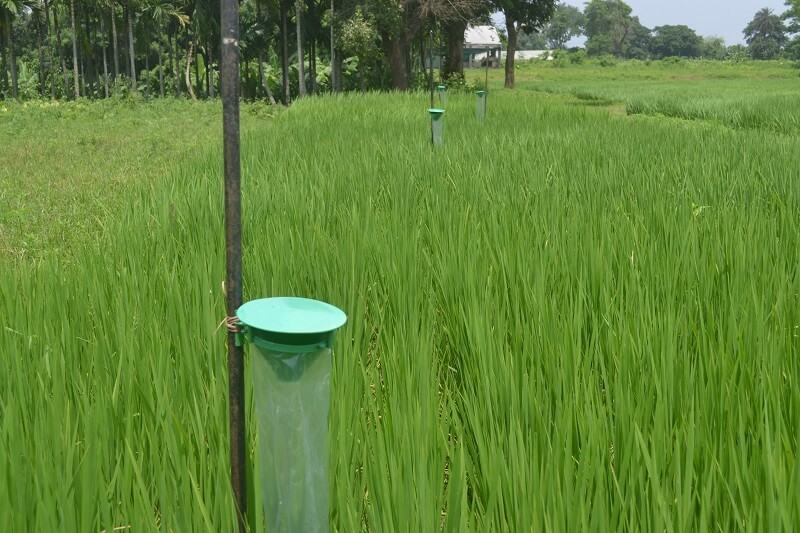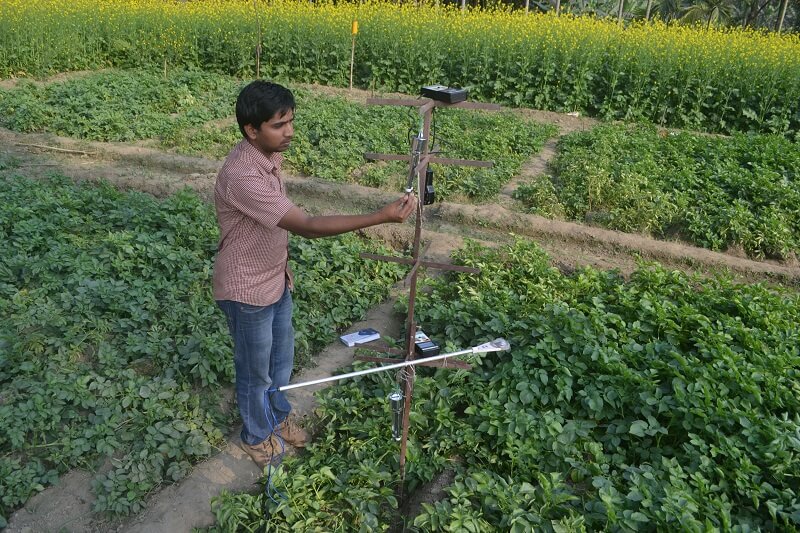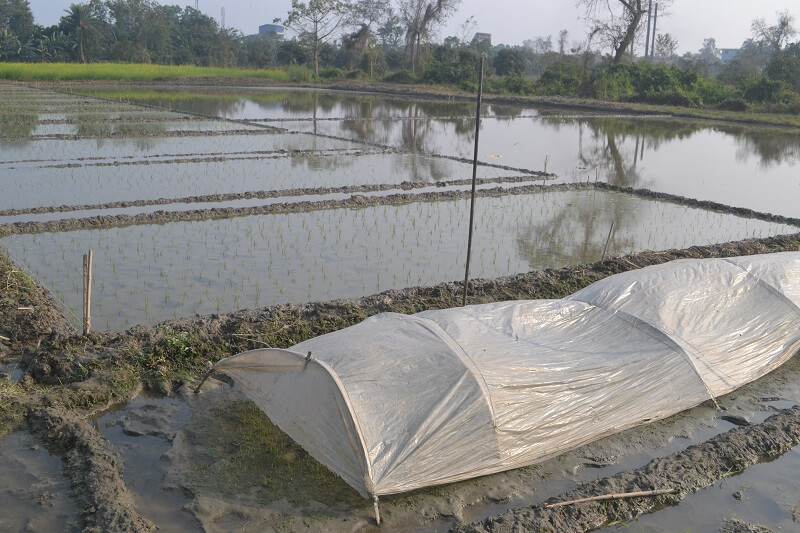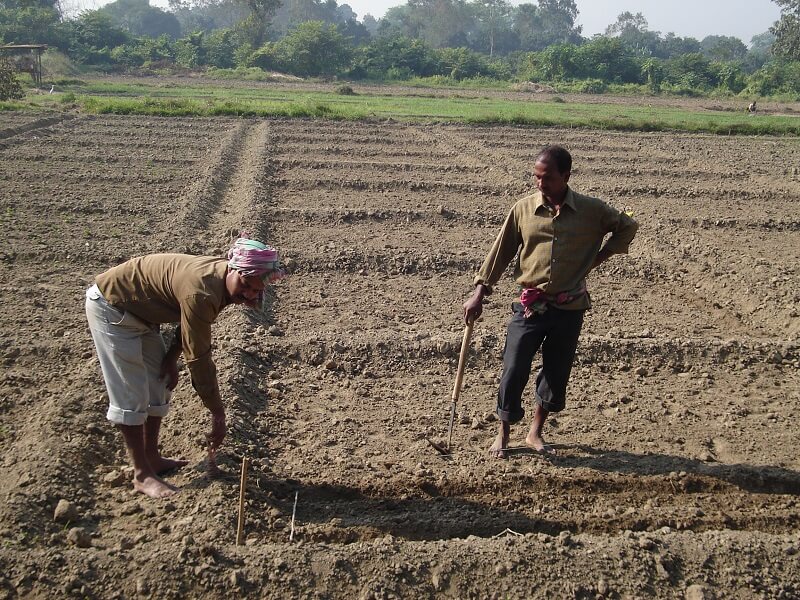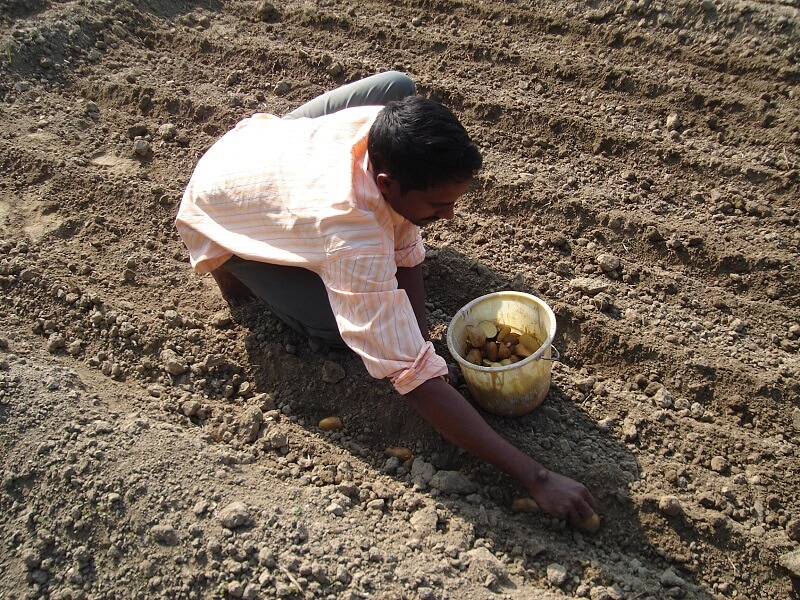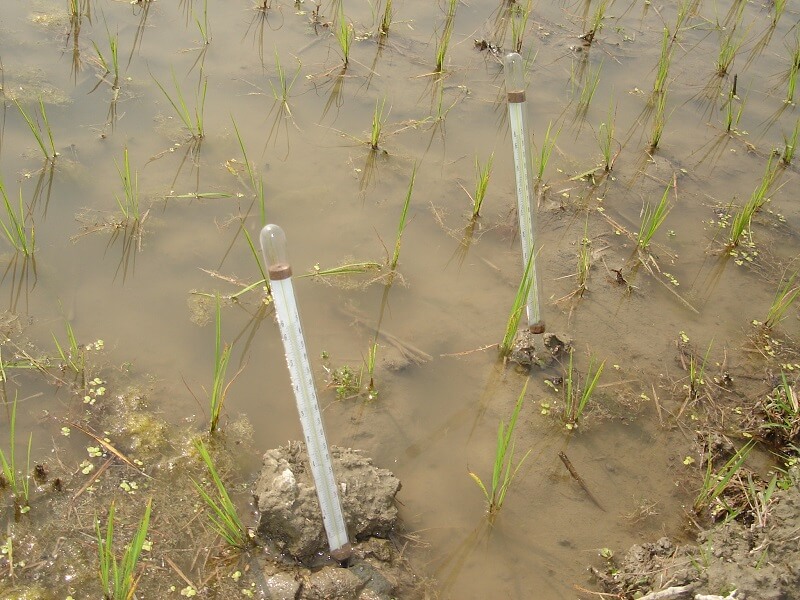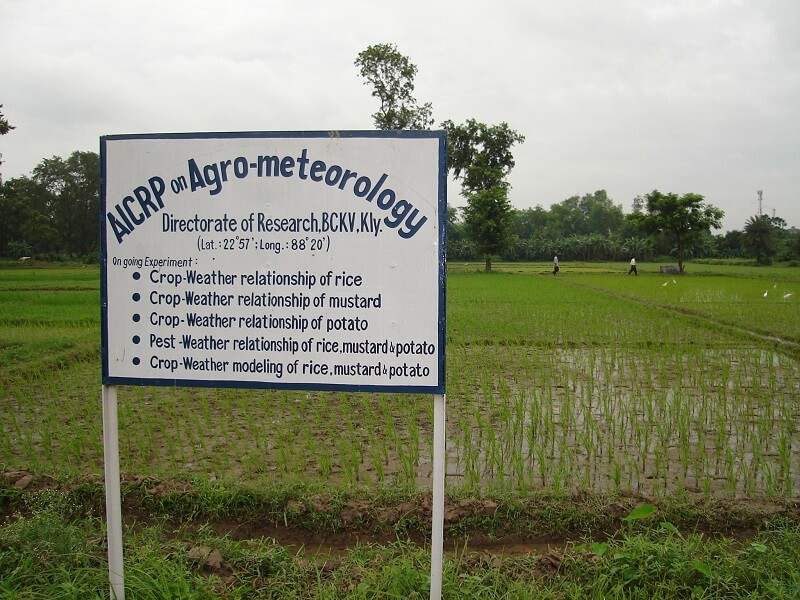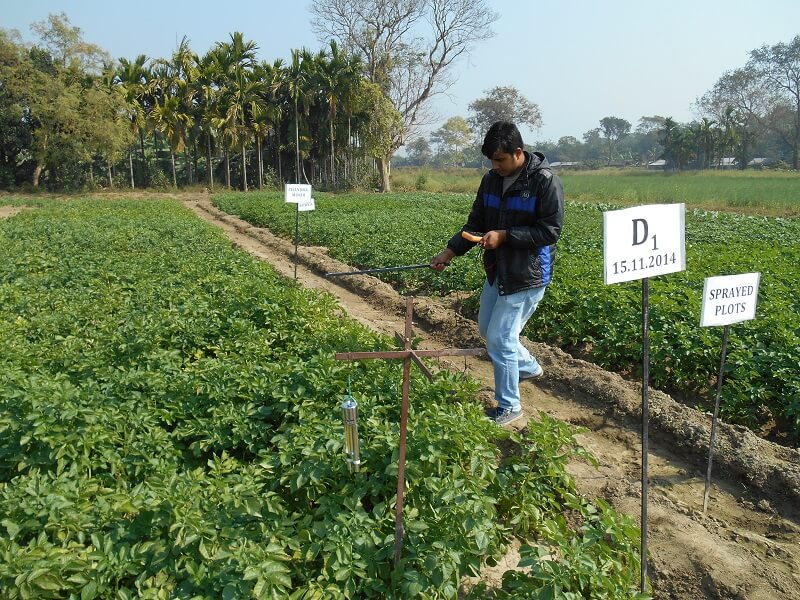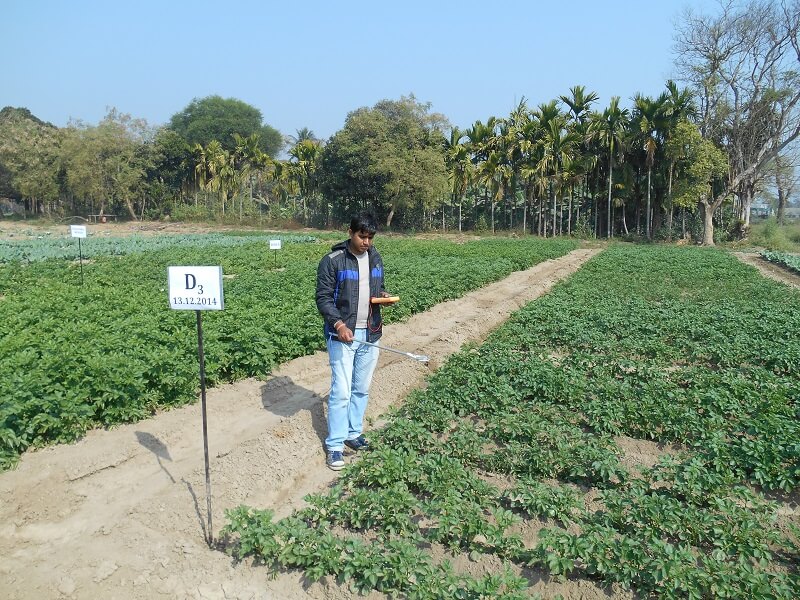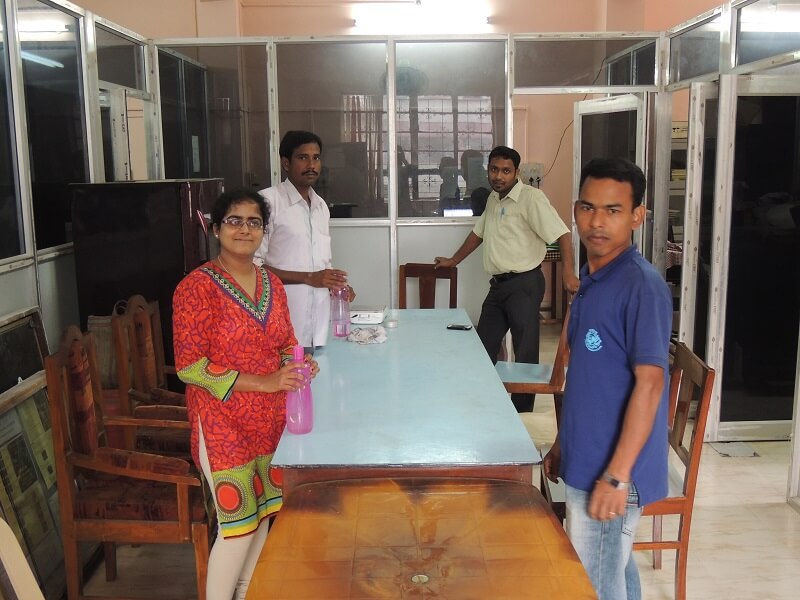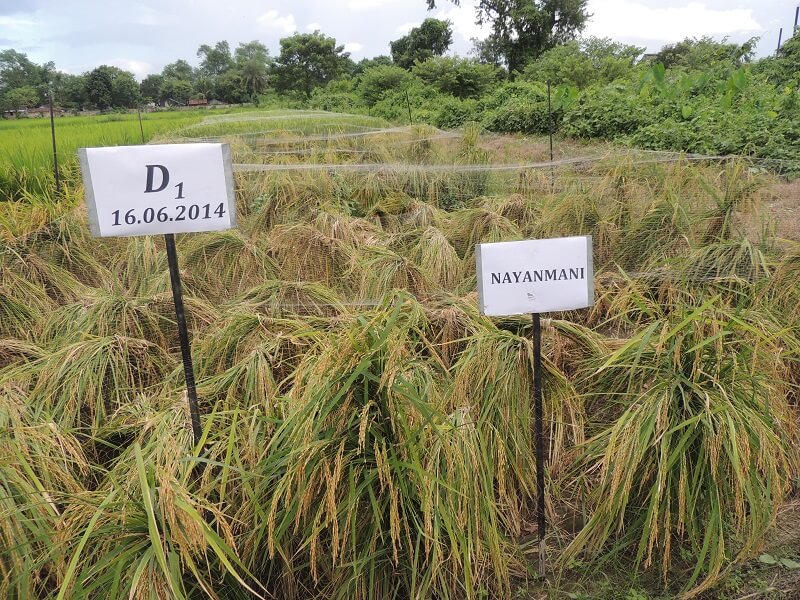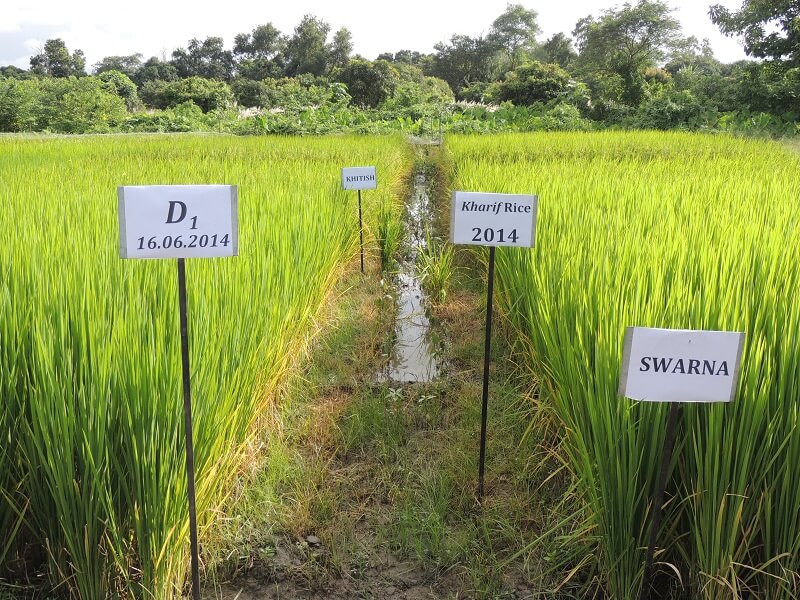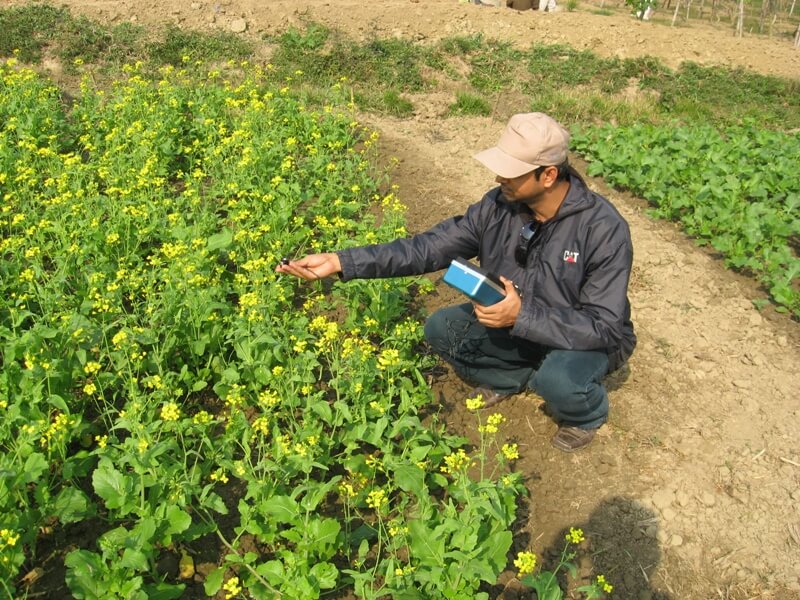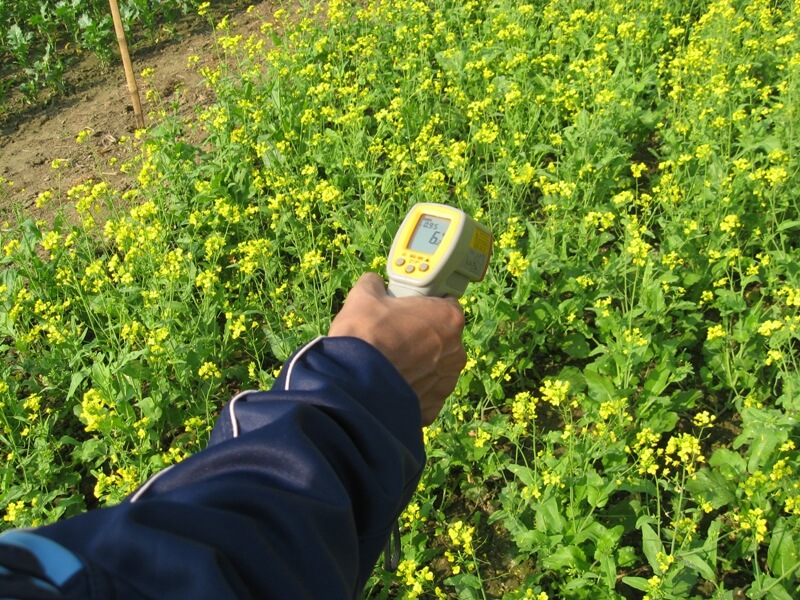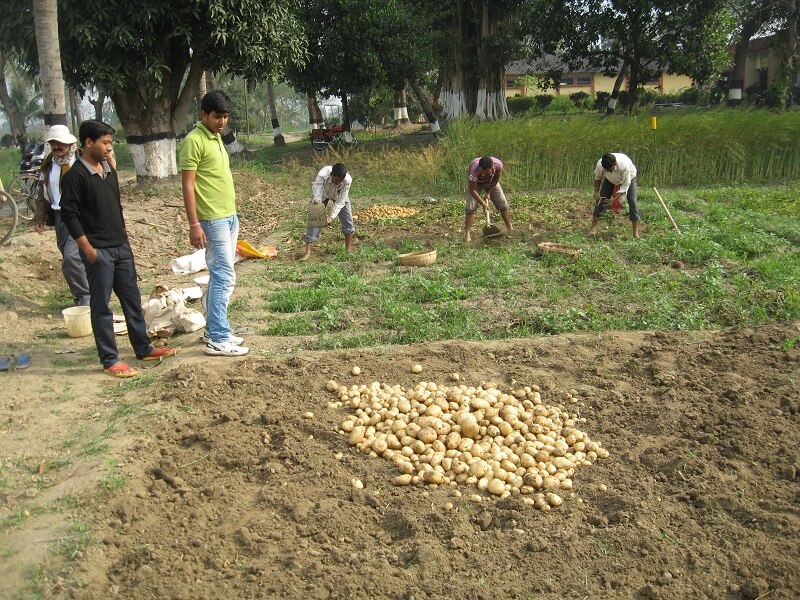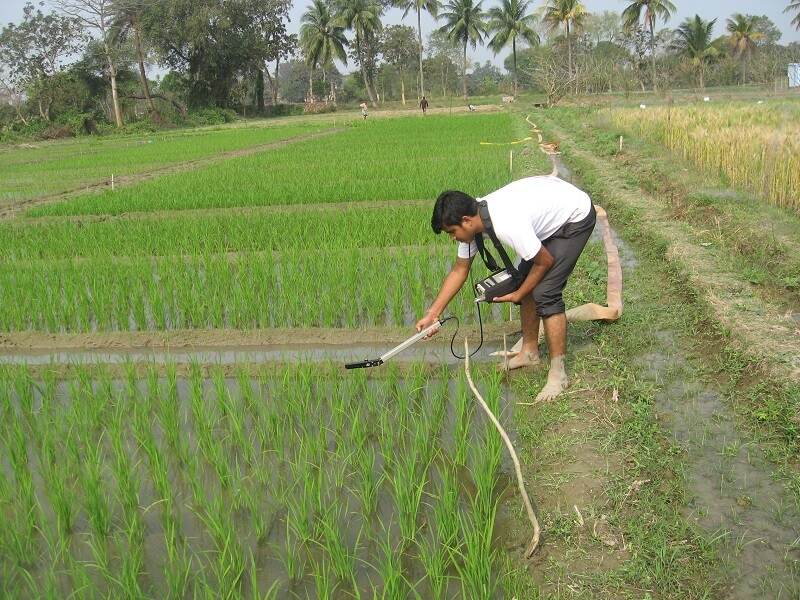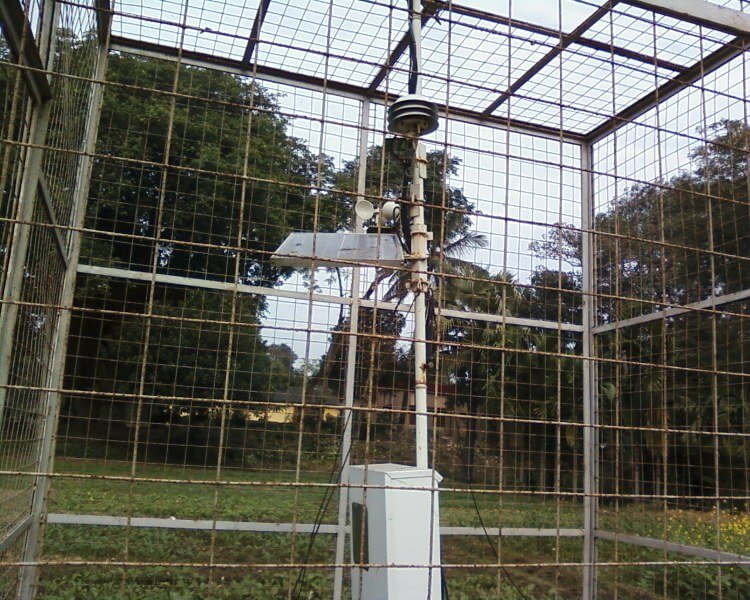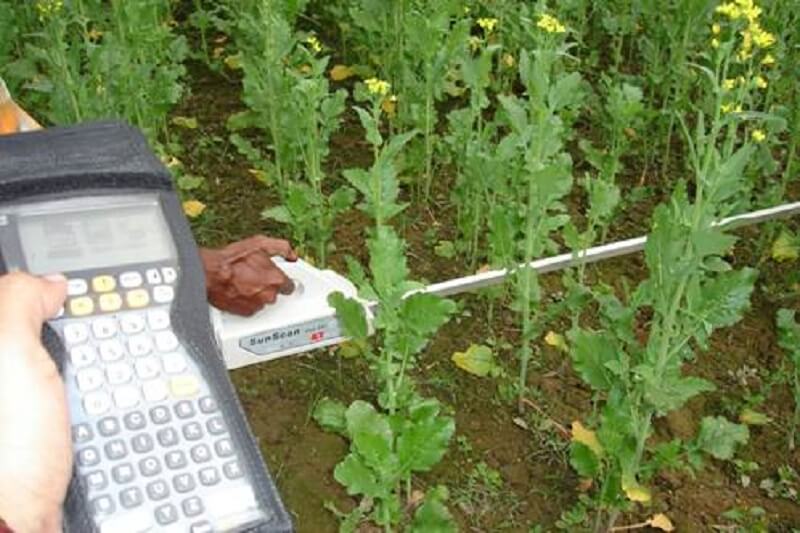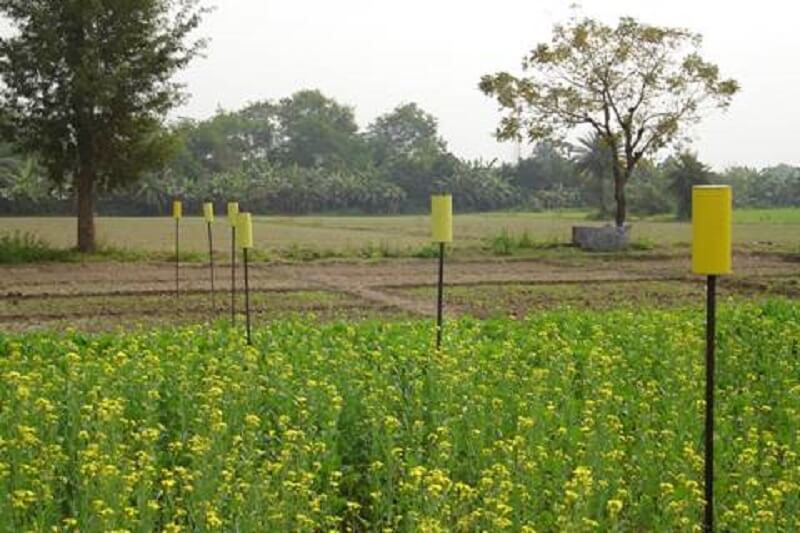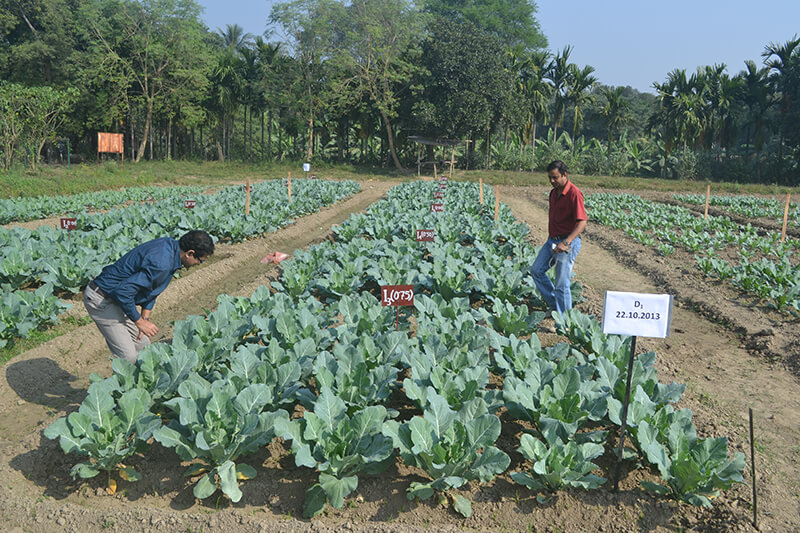AICRP on Agrometeorology
The All India Coordinated Research Project on Agrometeorology (AICRPAM ) was started during May 1983 with its Coordinating Unit at the Central Research Institute for Dryland Agriculture, Hyderabad and ten Cooperating Centres at Anantapur, Anand, Bangalore, Hisar, Jabalpur, Ludhiana, Mohanpur,Ranchi, Solapur and Varanasi. The programme was strengthened during VII Plan by starting two new centres, viz., Kovilpatti in Tamil Nadu and Ranichauri in the hill region of Uttar Pradesh. The Varanasi centre was shifted to Faizabad in 1990. The programme was further strengthened during VIII Plan with the addition of 13 new centres with effect from April 1995 at Akola, Arjia (Rajasthan), Bhubaneswar, Bijapur, Dapoli, Jorhat, Kanpur, Palampur, Parbhani, Raipur, Rakh Dhiansar (Jammu), Samastipur and Thrissur, thus covering 25 SAUs in the country. The main focus of the project is to determine the crop-weather relationship of major crops grown in the vicinity of a particular centre. The agroclimatic analysis of different agro-climatic zones is another important mandate of the project. Researches on pest-weather relationship and crop-growth modeling are done under this project.
Name of the Project : AICRP on Agrometeorology
Starting date : 1884
Staff position :
| Post sanctioned | Present incumbent |
|---|---|
| Agrometeorologist | Dr. Saon Banerjee |
| Agronomist | Dr. Asis Mukherjee |
| Sr. Technical Assistant | Mr. Satyesh Ch. Mukherjee |
| Met. Observer | Contractual person (Mr. S. Samanta) |
| Field Asstt. | Mr. Parimal Chakraborty |
| Junior Asstt. | Miss. Rituparna Dutta |
Infrastructure Available:
Instruments (Pyradiometer, Line Quantum sensor, infrared thermometer, Assmann Psychrometer, raingauge, maximum and minimum thermometer, sunshine recorder, dry bulb and wet bulb thermometer)
Mandate/Objectives:
- Agro-climatic analysis
- Crop weather relationship studies (Mustard, Rice, Potato, Mung bean)
- Crop growth modeling study
- Pest weather relationship studies.
No. of Trials Allocated/Conducted During 2013-18:
Allocated: 10 (2 each year)
Conducted: 10 (2 each year)
Salient Findings:
Agro-climatic analysis:
Daily rainfall data of different stations (111 stations) covering the whole West Bengal state has been analysed for the period of 1985 to 2012 for agroclimatic analysis. Agricultural drought, meteorological drought analysis of different stations of West Bengal was done. Rainfall probability analysis was done for the six agroclimatic zones of West Bengal and based on that crop planning was worked out under rainfed situation.
Trends in annual and seasonal rainfall
Using Mann-Kendall test it has been observed that 72% stations showed no significant trend in year-wise change of SW monsoon rainfall. Still an increasing trend is observed in major part of Birbhum, Burdwan and South 24 parganas. It has been observed that 68 % of the state showed no significant trend for annual rainfall (Fig. 4.25). Almost same increasing and decreasing trend has been observed in those districts as in case of annual heavy rainfall under both categories. From those figures, it is clear that majority (about 79% and 76% under 75-100 mm and more than 100 mm per day category respectively) of the stations in the state do not indicate any significant increasing and decreasing trend in heavy rainfall events.
Changes in rainy-days pattern
A declining trend is observed in major parts of Cooch Behar, North 24 Pargana, East Midnapur and Bankura districts. Rainy days during SW monsoon showed an increasing trend in some stations of Burdwan, Nadia, Bankura and Hooghly. Increase in monsoon rainfall in the Red lateritic zones of Birbhum and some parts of Burdwan will boost the soil moisture storage and thus the farmers can grow Kharif season crops depending on the rainfall.
Drought
Meteorological drought
The chance of occurrence of no drought is more than 50% for most of the area of the state. Probability of occurrence of mild and moderate drought was 20-40 % and 1-10% respectively throughout the state. Major portions of the state showed less than 1% chance of severe meteorological drought.
Agricultural drought
Agricultural drought has been observed earliest by 22nd -24th SMW in northern part of Coochbehar, most parts of Jalpaiguri, Midnapur (W), Malda, Murshidabad, Dinajpur (S) districts. Termination of agricultural drought during Kharif season predominantly observed between 37th-39th SMW in major portions of the state excluding Midnapur (W), Malda and Jalpaiguri district, where early termination by 5th-7th SMW was noted. It has been observed that in general major parts of the state experienced 3-5 times agricultural drought and an increasing frequency of 6-10 times also been observed in both Dinajpur, some portions of Malda, Murshidabad, Birbhum, western part of Burdwan, coastal part of East Midnapur, major portions of Purulia and South 24 Pgs district.
Extreme weather events
Episode of maximum one day Rainfall
No significant decreasing or increasing trend of maximum one day rainfall episode is noticed in major area (80%) of the state. Decreasing trend was mainly observed in southern parts and increasing trend in northern part of the state.
Seasonal temperature variation
Winter season
Darjeeling is coolest place with the seasonal mean maximum temperature 15.1°C. For whole West Bengal, the average temperature during this period is 23.8°C. Minimum temperature during winter is at the lowest level (13.0°C) throughout the state.
Summer season
Summer is the hottest season and the mean maximum temperature during this time is around 33.3°C. During summer the average minimum temperature of West Bengal is around 21.5°C.
Climatic types of West Bengal
Climate classification was done based on moisture index. The southern portion of the state is mostly moist humid while the central part of the state comes under dry sub-humid.
Crop-weather relationship:
Crop-weather relationship was worked out for Kharif rice, mustard and potato.
Mustard:
- For obtaining optimum yield, the maximum temperature should be in the rage of 30-32 oC and 27-28oC during early vegetative and reproductive stages, respectively.
- Elevated (2-3 oC) maximum temperature may cause flower abortion.
- If the maximum temperature remains 2-3 oC below the optimum level, it may halt the procedure of pod formation.
- The minimum temperature requirement varies from 17-20 oC during vegetative stage and 12-15 oC during reproductive stage.
Rice:
- The national variety Swarna (IET5656) produced 5.6 tha-1 closely followed (5.4 tha-1) by popular variety Satabdi (IET 4786) in WB. The productivity of pre-released Nayanmani variety was 4.2 tha-1.
- Swarna is long duration (130 days) crop with lodging problem in high rainfall/wind condition. Satabdi is medium duration (105 days) with less lodging. Nayanmani is a short duration (95 days) with less lodging.
- The temperature and its range (Max. T – Min. T) are the main governing factors for Kharif rice yield in New Alluvial Zone of West Bengal.
- Tmax in the range of 33 – 34 OC can provide better yield.
Potato:
- Last fortnight of November is the best planting time for potato.
- Both Kufri Jyoti and Kufri Surya are heat tolerant variety and Kufri Chandramukhi is heat susceptible crop.
- Surya is the highest producer (26.0 tha-1) followed by Jyoti (24.6 tha-1).
- Higher temperature during later part of the crop growing season reduces the yield by increasing photorespiration.
- If maximum temperature goes beyond 250C after stolonisation stage, yield production may hamper severely due to early crop drying and improper tuber bulking.
- Low minimum temperature during early stages may inhibit the vegetative growth and high minimum temperature during tuber bulking stage reduces the movement of photosynthates from source to sink (tuber).
- December 2nd week planted crops generally experience the above stated weather condition and thus, produced the lowest tuber yield.
- During tuber bulking the minimum temperature of 120C is favourable for potato cultivation.
Crop Weather Modeling Studies:
Mustard:
- InfoCrop. The yield reduction of mustard would be 436.3 Kg ha-1 (25.5%) and 562Kg ha-1 (32.8%) respectively under 1oC and 3 oC elevated temperature. The InfoCrop output showed an average yield reduction of 26.7% and 34.3% respectively for 2025 and 2050.
Rice:
- DSSAT model slightly overestimated (2.5 to 2.7%) the grain yield under mid of June to mid of July. But in case of end of July transplanting the percent of variation was very high as 47%. Crops under July end transplanting generally affected by disease and produced unfilled grain which resulted drastic reduction in yield. That’s why the simulated yield did not match with the observed yield.
- The average yield reduction of the wet-season rice was observed to be around 20.0 % for 2025. For 2050, the simulation resulted higher yield reduction (27.8 %) compared to 2025.
Weather Effects on Pest and Diseases:
Potato:
- In all cases, it is observed that the higher PDI is associated with higher temperature range
Recommendations at State/National Levels (Variety/ Technologies/Patenting etc):
- Considering prevalent suitable weather conditions in New Alluvial zone, the optimum date of sowing of mustard is end of October. However, the sowing window can be extended up to middle of November.
- Optimum transplanting time zone of kharif rice extended from June end to 1st week of July for all the varieties. Delay of transplanting by 15 and 30 days reduced the yield by 670 and 920 Kg ha-1 respectively.
- The average yield reduction of the wet-season rice was observed to be around 20.0 % for 2025. For 2050, the simulation resulted higher yield reduction (27.8 %) compared to 2025. The optimum sowing time should be around 1st June and the late sowing beyond 15th June may be avoided in future. It was observed that the higher N: P: K dose (120: 40: 40 kg ha-1) can solve the problem of temperature enhancement to some extent. Under elevated temperature condition(3 °C more), the normal nutrient dose resulted about 3,455.2 kg ha-1 yield, whereas application of 120 kg ha-1 nitrogen resulted 4,304.6 kg ha-1 yield i.e. 24.6 % more yield
- Last fortnight of November is the best planting time for potato.
- Both Kufri Jyoti and Kufri Surya are heat tolerant variety and Kufri Chandramukhi is heat susceptible crop.
- Surya is the highest producer (26.0 t ha-1) followed by Jyoti (24.6 t ha-1).
Funding agency : ICAR-CRIDA, Hyderabad
Achievements
- Agroclimatic Characterization: Agricultural and meteorological drought analysis, rainfall probability analysis and climate trend analysis were done under this section. The knowledge of agroclimatic characterization can provide knowledge base for selection of variety and cropping sequence.
- Crop-Weather Relationships of Kharif rice, mustard and potato has been carried out and impact of weather parameters like temperature, radiation, etc., on growth and yield were evaluated.
- Crop Weather Modelling Study has been done for Kharif rice and mustard which enables to predict the yield of said crops in the New Alluvial Zone of West Bengal.
- Weather effects on Pest and Diseases for late blight of potato and mustard aphid were worked out. Relationship among pest population/ disease intensity and weather parameters (last 7-15 days average) are used in the preparation of Agromet Advisory Bulletin.
- For better water utilization, WUE of potato crop and energy balance study over mustard were worked out.
- Several Technical Books were published and each year Farmers’ Awareness Programme on Climate Change is conducted.
- One 10 days regional level training on “Basic aspects of agrometeorology and weather based AAS” was organized in 2013.
- Organised Agromet Research Explicate Programme (AREP) in 2016. AICRPAM Mohanpur received Best centre for disseminating Agromet Advisory Service: 2013-14.
- Dr. Asis Mukherjee received Endeavour Research Fellowship for 2016 by Australia Govt. for post doctoral Research.
- Dr. Asis Mukherjee received Young Scientist Awards 2015 conferred by Crop and weed science Society, BCKV.
Publications
Technical book
- Extreme weather events and trends of climatic variables in west Bengal: Analysis and occurrence by Asis Mukherjee, Saon banerjee, monotosh Das Bairagya, Suman Samanta, Pramiti Kumar Chakraborty, M.A. Sarath Chandran and Agniswar Jha Chakraborty.
- “Agroclimatic Atlas of West Bengal” by Asis Mukherjee, Saon Banerjee, Suman Samanta, Monotosh Das Bairagya, Pramiti Kumar Chakraborty, Dibyendu Mahata
- Training manual on ‘‘Basic aspect of Agrometeorology and weather based agromet advisory service system’ by A. Mukherjee, A. Saha, G. Saha,L.Das, M.K. Nanda, P.K. Chakraborty,S.A. Khan, S. Sarkar, S. Banerjee
- "Weather based decision for growing Kharif rice in West Bengal” by Asis Mukherjee, Saon Banerjee, Kushal Roy, VUM Rao, GGSN Rao & B. Venkateswarlu
- “Glimpses of Research on Agrometeorology in West Bengal” by Saon Banerjee, Asis Mukherjee, S.A. Khan, P.K. Chakraborty, VUM Rao & B. Venkateswarlu
- “Awareness and perception of farmers on climate change: West Bengal perspective” by Agniswar Jha Chakraborty, Saon Banerjee, Asis Mukherjee and Subharanjan Das
- “Agrometeorological requirements and management practices of rapeseed-mustard in Gangetic West Bengal” by Asis Mukherjee, Saon Banerjee, Satyesh Mukherjee, Suman samanta and Agniswar Jha Chakraborty
- “Crop Weather calendar of Kharif Rice, mustard and potato” by Monotosh Das Bairagya, Saon Banerjee, Asis Mukherjee.
- “Contingency crop planning for different agro-climatic zones of West Bengal” by Saon Banerjee, Asis Mukherjee, Biswajit Basu, S. Mukhopadhyay and G. Sarkar
Research paper:
- Banerjee, S., Das, S., Mukherjee, A , Mukherjee, P. Saikia, B. (2014). Assessing impact of climate change on performance of wet season rice and mustard in West Bengal, India using crop growth simulation model. Mitigation Adaptation Strategy for global Change. DOI 10.1007/s11027-014-9595-y
- Banerjee, S., Mukherjee, A., Sattar, A., Biswas, B., (2015). Change detection of annual temperature and rainfall in Kalingpong station under Hill zone of West Bengal. Indian Journal of Hill Farming. 28 (2): 81-84 (NASS rating: 2.86 Impact Factor: )
- Mukherjee, A., Banerjee, S., Samanta,S., Jha Chakraborty, A., Deka, N. (2013). Variation of absorbed photosynthetically active radiation (PAR) and yield of different kharif rice cultivars influenced by date of transplanting. J of Agrometeorol.15 (2): 126-128
- Banerjee, S., Chatterjee, S., Mukherjee, A., Samanta,S.,Bose, M. (2013). Variation of crop evapotranspiration from the potato field at two selected locations of West Bengal, India. J of Agrometeorol.15 (Special Issue II): 64-66
- Das, S., Biswas,S., Banerjee, S., Mukherjee, A. (2013).Projected boro rice yield of different locations of West Bengal by DSSAT model. J of Agrometeorol.15 (Special Issue II): 244
- Mukherjee, A.L., Mukherjee, A., Banerjee, S., Chaudhuri, S. (2012). Rainfall probability analysis of Purulia district, West Bengal. Journal of Agrometeorlogy (14): 157-161
- Basu, B., Mondal, B.C., Mukherjee, A., Banerjee, S., Rao, V.U.M. (2012). Weather based agro-advisories towards enhancing resilience of agriculture at Bongheri Village, West Bengal. Journal of Agrometeorlogy (14): 252-255
- Biswas, S., Mukherjee, A., Sarkar, S., (2012). Screening of suitable climatological model for estimation of reference evapotranspiration in New Alluvial Zone of West Bengal. Journal of Agrometeorlogy (14): 292-298
- Das, S., Biswas, S., Mukherjee, A., Banerjee, S. (2012). Evaluating performance of rice under elevated CO2 and temperature condition through DSSAT model. Journal of Agrometeorlogy (14): 325-330
- Samanta, S., Banerjee, S., Mukherjee, A. (2012). Rainfall variability study over Kalyani region, West Bengal. Journal of Agrometeorlogy (14): 401-406
- Mukherjee, A., Banerjee, S., Chatterjee, S., Banerjee, S., Chakravarty, A.K., Sarkar, S., (2012). Yield and water use pattern of wheat grown under different date of sowing and varying irrigation scheduling. Journal of Agrometeorlogy (14): 285-291
- Bairagya, M.D., Kundu, C.K., Gupta, P.C., Mukherjee, A., Sarkar, S., (2012). Role of soil water stress on actual evapotranspiration and water use pattern of summer rice. Journal of Agrometeorlogy (14): 491-496

